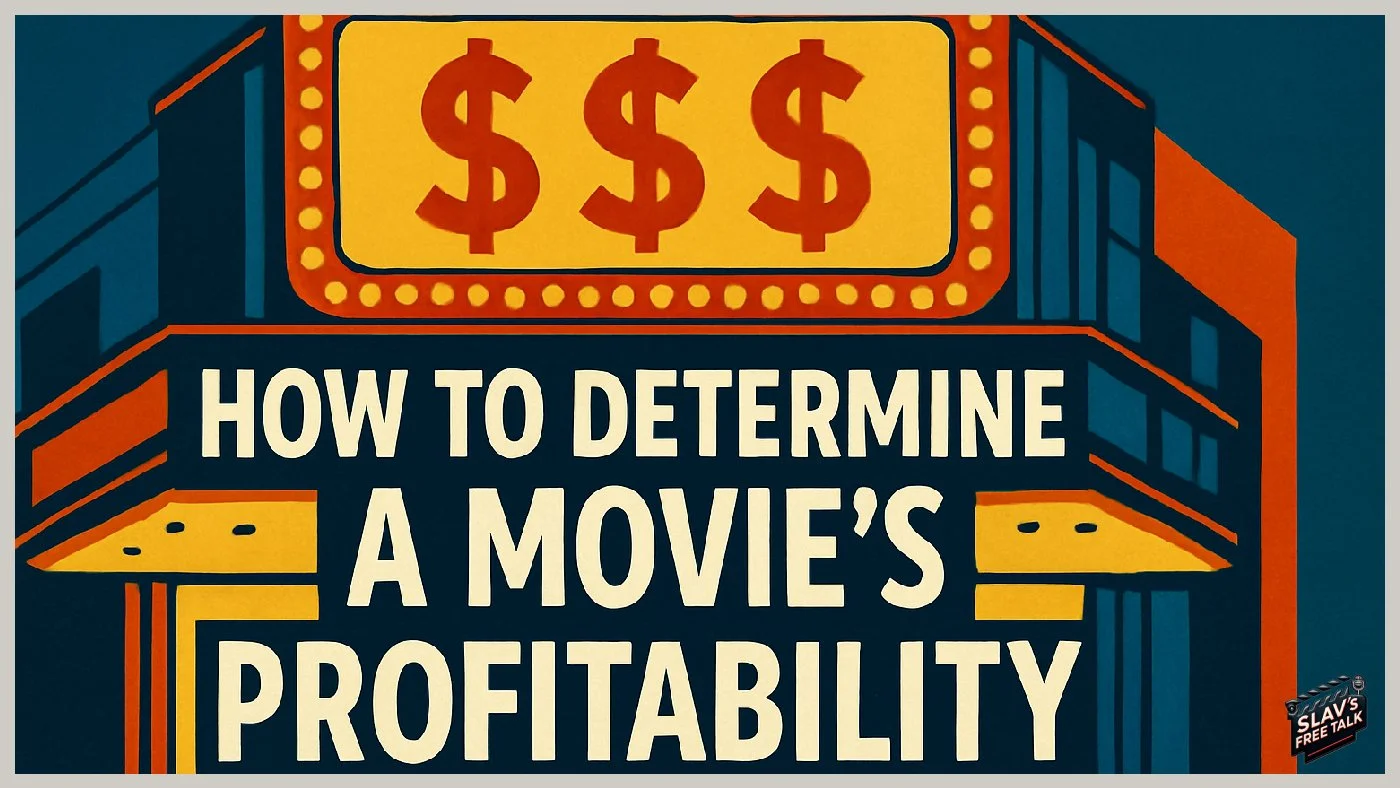How to Actually Figure Out a Movie's Profit (Spoiler: It’s Not Just Budget vs Box Office)
You’d think figuring out if a movie made money would be simple. Budget vs. box office, right?
Wrong. Hollywood doesn’t work like that. Studios have a whole bag of tricks and expenses that make the profit picture way more complicated—and marketing is the big wild card.
Let’s break this down.
The Real Math Behind Movie Profits
A movie’s profit isn’t just what it makes in theaters minus the production budget. That’s rookie math.
Here’s what studios really look at:
Production Budget – What it cost to make the movie.
Marketing & Distribution (P&A) – What it cost to advertise, promote, and get it into theaters.
Theater Cuts – Studios don’t keep all the box office money. Theaters take about 50% off the top.
Other Costs – Overhead, interest on loans, executive fees, distribution charges, and more.
So even if a film makes double its production budget at the box office, it might still lose money once all that’s factored in.
Where Marketing Fits In
Is marketing part of a movie’s budget?
Technically? No.
When you hear “This movie cost $150 million,” that number usually does NOT include marketing. That’s typically the production budget only.
Marketing which is known in the biz as P&A (Prints & Advertising) – is a separate beast. And it’s not cheap.
For big blockbusters, studios often spend as much or more on marketing as they did making the film.
$100 million to make it?
Don’t be shocked if another $100 million went into ads, trailers, posters, press tours, and even YouTube takeovers.
Even smaller movies can get hit with a $20–$50 million marketing tab. It’s unfortunately a necessary evil if you want to have a chance of the movie being a success.
Is Marketing Charged to the Movie or the Studio?
Here’s where it gets tricky.
Direct marketing costs (TV ads, billboards, trailers, etc.) are almost always charged to the movie itself. That means when studios calculate how much profit (or loss) a film made, those marketing dollars get subtracted.
HOWEVER
Some studio wide marketing expenses… like the salaries of the marketing team or long term brand-building are considered part of general overhead. That means those aren’t pinned to any one film. Instead, they’re spread across the studio’s entire release slate for the year.
So yes, there is an actual ad spend that can go on the movie’s books. But the behind the scenes costs? Those get buried in the studio’s overall budget.
What that means is, when you hear a movie has a Marketing budget of $100 million. That may or may not include the overhead of those involved behind the scenese. This is why Box Office discussion is so much of a guessing game for those outside the business and really outside the specific studio being discussed.
What About Tax Write-Offs?
Studios love marketing spend for one big reason… it’s fully tax-deductible!
Unlike production costs that get capitalized over time, marketing is expensed immediately.
That means if a film bombs, at least the marketing loss helps reduce the studio’s taxable income.
It’s not a win…. but it definitely softens the blow.
(John Carter anyone?)
Studios Plan Marketing Like a War Strategy
Don’t think for a second that studios wing this.
They budget marketing across all their films for the year, treating each like a portfolio investment. Big blockbusters get big spends. Smaller films get tighter campaigns. And if a movie starts to look like it’s gonna tank, they’ll sometimes scale back the ad budget mid campaign to save face and money.
They also cross promote, stack trailers, and use owned platforms (socials, streaming apps, etc.) to stretch every dollar…. It’s brilliant strategy really.
It’s chess, not checkers.
What About Product Placement?
Product placement can be a quiet goldmine. When brands pay to appear in a film… Take Audi in Iron Man or Heineken in Skyfall… that money goes directly onto the studio’s books as revenue.
It can help offset production or marketing costs, lowering the break even point.
Even when no cash is exchanged, brands might offer perks like free gear, cars, or promotional support. That doesn't show up as income, but it does reduce expenses.
Plus, product placement gives films more value on digital and streaming platforms, since the branding sticks around forever.
In short… whether it’s upfront cash or free promotion, product placement helps a movie’s bottom line… without selling a single ticket.
What About Digital and Physical Sales?
Once a movie leaves theaters, the profit train doesn’t stop… it just changes tracks.
Digital purchases, rentals, Blu-rays, 4Ks, and DVDs are a major second revenue stream.
Studios keep a much larger cut of this money compared to box office (often up to 70% or more per sale). And unlike theaters, there's no split with cinema chains.
Depending on the film, home media and digital sales can account for 20–40% of total revenue over time.
Cult hits and family films especially thrive here. For Instance The Greatest Showman made serious post theater cash thanks to strong home sales.
All in all, Digital and physical sales don’t just pad the profit they can sometimes save a film that underperforms theatrically.
So When Is a Movie Actually Profitable?
Here’s the dirty little secret: a movie usually has to make 2.5 to 3 times its production budget before it sees real profit.
That’s because everyone gets paid before the studio does:
Theaters take roughly half the box office
Marketing bills—often $100M or more… come due
The studio charges itself distribution and overhead fees (yes, seriously)
Profit participants (actors, directors, producers) take their cut
And even if the movie clears all that, there’s still the waiting game on digital sales, Blu-rays, and rentals, which can trickle in over months or years. Sometimes those home media numbers save an underperforming theatrical run… but they don’t show up right away.
Then there’s product placement, which helps offset costs early on—but unless it’s a massive deal (think Skyfall), it’s usually not enough to make a flop profitable.
It’s why a movie like Bohemian Rhapsody can make $900 million and still be called “unprofitable” on paper.
Hollywood accounting is… creative.
But What About Those Tax Write-Offs?
A tax write off doesn't mean the money disappears. It just means it reduces taxable income.
See, the studio still spent that money on marketing. It counts as a cost when calculating profit.
Let’s do a quick break down for you here.
What Does “Written Off” Actually Mean?
When a studio spends $100M on marketing, it’s allowed to deduct that $100M from its taxable income for that year.
This helps reduce the amount of taxes the studio pays to the government.
But it doesn’t erase the fact that $100M still came out of the studio’s wallet.
👉 A write-off helps with taxes. It doesn’t magically refund the money.
Think of It Like This
You buy a laptop for your business for $2,000.
You write it off at tax time, so you save a few hundred in taxes.
But did you get the $2,000 back? Nope. You still spent it.
Same with marketing.
So yeah, next time someone says a movie “only” made double its budget, don’t assume it’s a win.
Marketing matters. A lot. And it’s not always in the numbers you see online.
Studios track every dollar they spend to make sure they squeeze every penny of profit or every tax write off they can.
The system isn’t broken. It’s specifically built that way.


